In the second half of the 13th century, a vast empire ruled by nomadic people from the steppes of what is now Mongolia stretched from the western shores of the Pacific Ocean all the way to the Middle East and Eastern Europe. Victory after victory followed the Mongols wherever their horsemen rode, bringing the demise of once powerful kingdoms across the Old World. The Mongol military campaigns to conquer Japan, however, failed miserably thanks to Japanese resistance as well as the seasonal typhoons that hit the southern islands, known as kamikaze (divine wind), which caused heavy damage to the Mongol battle ships. Kublai Khan, the Mongol ruler who initiated the attempts to defeat Japan, learned the hard way that his invincible armed forces were still unable to subjugate lands across the sea beyond his realm on the Eurasian landmass.
Far to the south on the island of Java, Singhasari flourished under Kertanegara who ascended the throne following the death of his father, Wisnuwardhana. The latter together with Narasingamurti brought an end to what was arguably the bloodiest chapter in the history of Java and provided Kertanegara with the legacy of a stable kingdom upon which the new king embarked on his own ambitious conquests. From his capital in Tumapel (near present-day Malang, East Java), Kertanegara launched military expeditions overseas, including to Sumatra, Bali and Pahang (in modern-day Peninsular Malaysia). He also forged an alliance with Champa, an ancient kingdom in what is now southern Vietnam.
Back home, Kertanegara commissioned several temples with a distinctively syncretic Hindu-Buddhist character, among which Candi Jawi is the most famous today. A patron of a Tantric blend of Hinduism and Buddhism, Kertanegara who was also called Sivabuddha nurtured these beliefs which were practiced throughout Southeast Asia at the time. According to Nagarakretagama, an Old Javanese eulogy written in the 14th century, a statue of the Hindu god Shiva once resided in the sanctum of Candi Jawi. Depicted on his crown was Akshobhya, one of the emanations of the qualities of the first Buddha. Apart from the mélange of Hindu and Buddhist ornamentation, Candi Jawi is also unique for its use of dark and white stones. The latter were believed to have been quarried from the north coast of Java or the neighboring island of Madura.
Singhasari’s wealth and growing prominence in the region came to the attention of Kublai Khan, who then sent emissaries to Java in 1280 demanding Kertanegara’s submission. Unsurprisingly, Kertanegara sent the Mongol envoys home empty-handed, prompting the great khan to send another mission a year later, only to be met with persistent refusal from the Javanese king. Reeling from their defeat at the hands of the Japanese, it took the Mongols eight years to dispatch delegates to Java again in 1289. Probably enraged by Kublai Khan’s insistence on subjugating Singhasari, Kertanegara scarred an envoy’s face, a clear message to the khan to never again demand the Javanese kingdom to pay tribute or yield its sovereignty to the Mongols. Upon their return to China – at that time the Mongol Empire’s seat of power – the emissaries reported Kertanegara’s hostile treatment toward them, inciting the khan’s rage. A punitive expedition was immediately planned.
In late 1292, Kublai Khan sent a massive fleet of war junks to conquer Java – probably their first ever war campaign to cross the equator. The Mongols arrived on the northern coast of Java in early 1293, unaware of an event that had brought the demise of Singhasari a year earlier. Jayakatwang, the viceroy of Kediri, planned to kill Kertanegara and claim the throne of Singhasari. Kediri was in fact a powerful kingdom until Ken Arok – Singhasari’s first king – conquered and incorporated it into his kingdom. Some historians believe that apart from his personal ambition, Jayakatwang’s brazen act was also driven by the urge to avenge Kediri’s defeat by Singhasari. During a ceremony at his palace, Kertanegara was assassinated by Jayakatwang, effectively ending the 70-year-old kingdom of Singhasari.
Raden Wijaya, Kertanegara’s son-in-law, who was sent by the ill-fated king to put down a rebellion in the north – staged by Kediri to distract the king from the real threat coming from the south – waged a futile campaign to defend Singhasari. However, through his connections, the prince in exile managed to secure a settlement in the north, far from Jayakatwang’s reach. When the Mongols made landfall on Java, Raden Wijaya saw this as an opportunity to overthrow the new king from Kediri. The unsuspecting Mongols took Raden Wijaya’s offer to help them fight against what they thought were Singhasari’s forces, and emerged victorious. Jayakatwang surrendered and was later executed by the foreign army. Then an unforeseen twist of events unfolded: Raden Wijaya turned on the Mongols and successfully drove them from Java a few months after their arrival.
The Mongols suffered another defeat from an archipelagic power, underlining their infirmity overseas and their exclusively land-based prowess. On the other hand, after defeating the Mongols, Raden Wijaya founded a new kingdom from his capital in the northern plains of East Java, from which a great empire known as Majapahit would rise and prosper long after his death. Purportedly, it was under Raden Wijaya’s rule that a mortuary temple for Kertanegara was commissioned near the former capital of Singhasari.
Centuries after the fall of Majapahit when Java was under Dutch colonial administration, the ruins of Candi Singhasari (Candi Singosari) – the temple dedicated to Kertanegara – were rediscovered. However, restoration work was only carried out by the Dutch more than a century later in the 1930s which gave the temple its current appearance. Unlike other ancient shrines in Java which were always embellished by ornate reliefs and adorned by statues of the Hindu-Buddhist pantheon, Candi Singhasari is conspicuously absent of such intricate carvings, except for its upper section where four fierce kala heads face the four directions. This suggests that the temple was in fact never finished, and no one knows why. Roughly 300 meters to the northwest of the temple stand two huge dvarapala statues – guardians of Hindu-Buddhist temple compounds. Their sheer size – much larger than other dvarapalas found in Java or Sumatra – is perhaps an indication of a monumental structure they once guarded. But for now, the past of these giants as well as Candi Singhasari remains mostly shrouded in mystery, waiting to be rediscovered by generations to come.
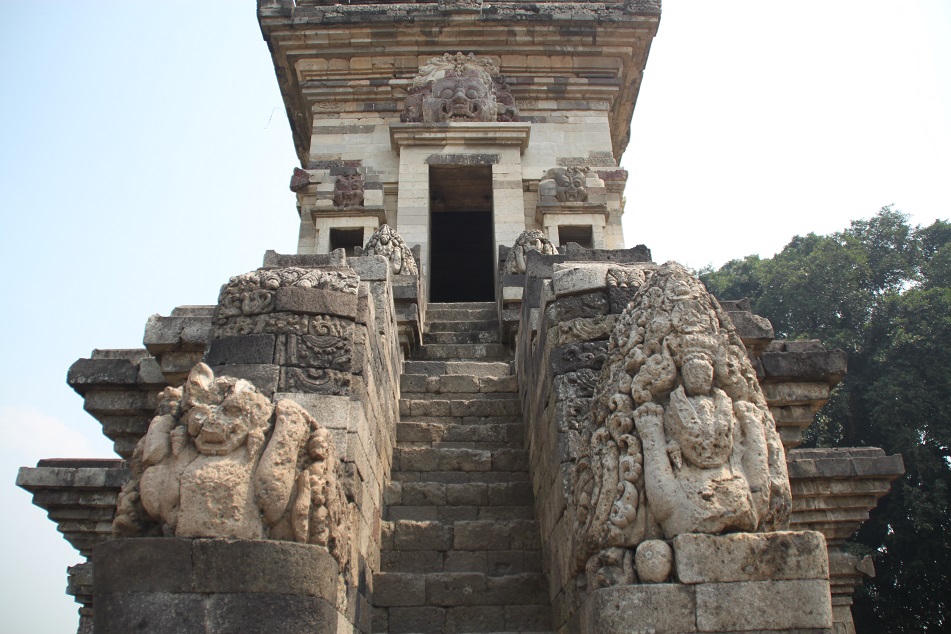
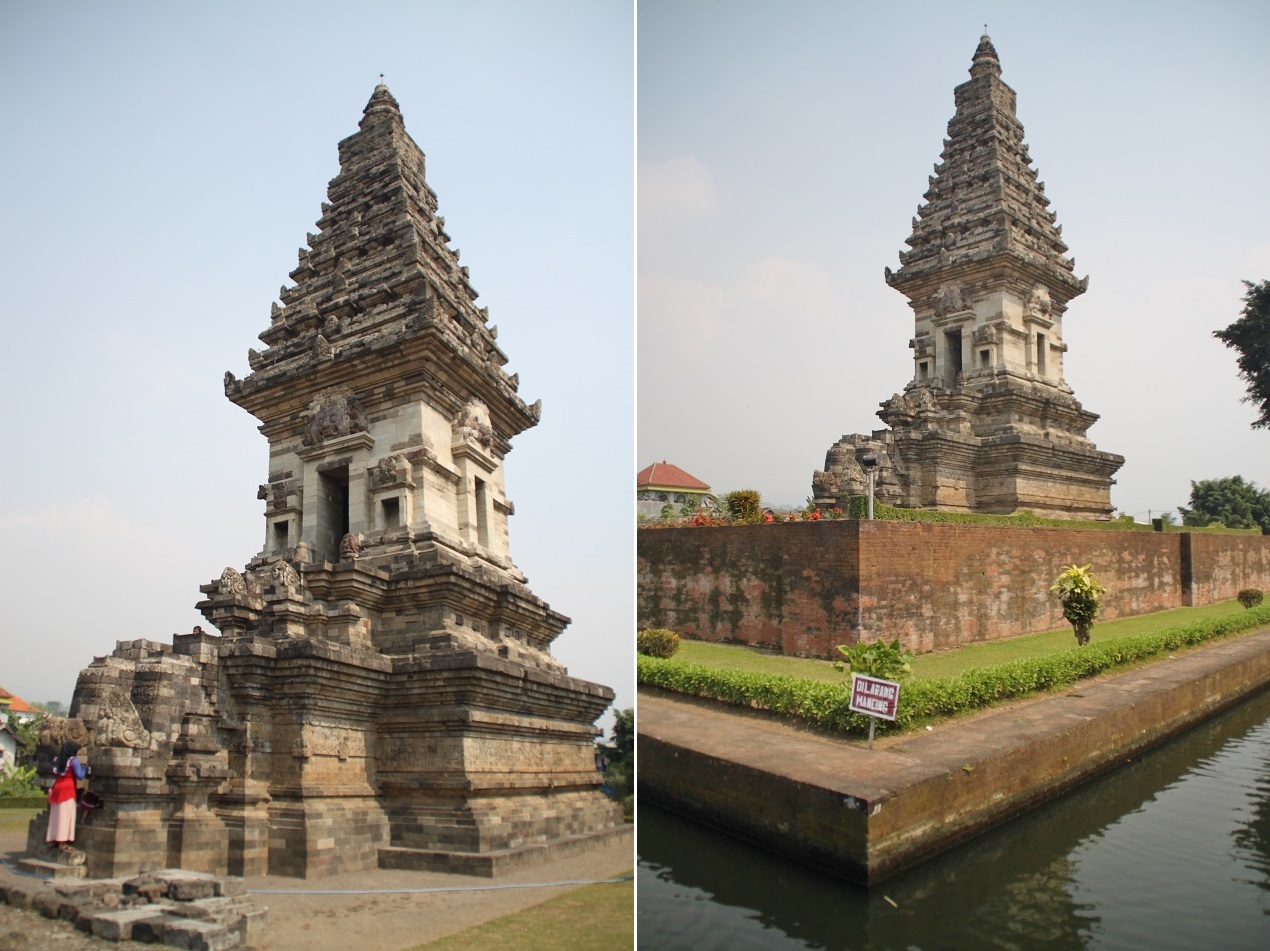


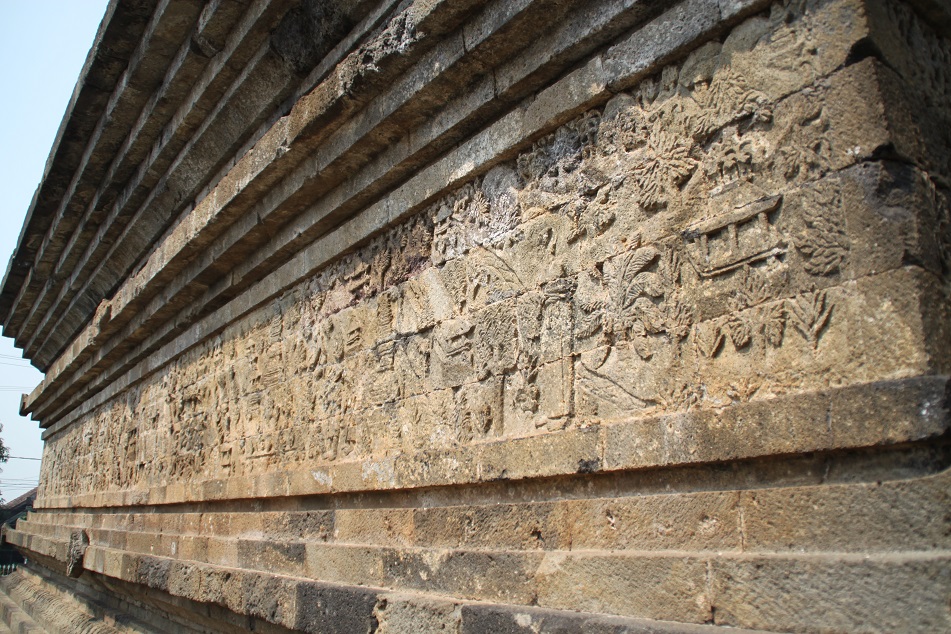
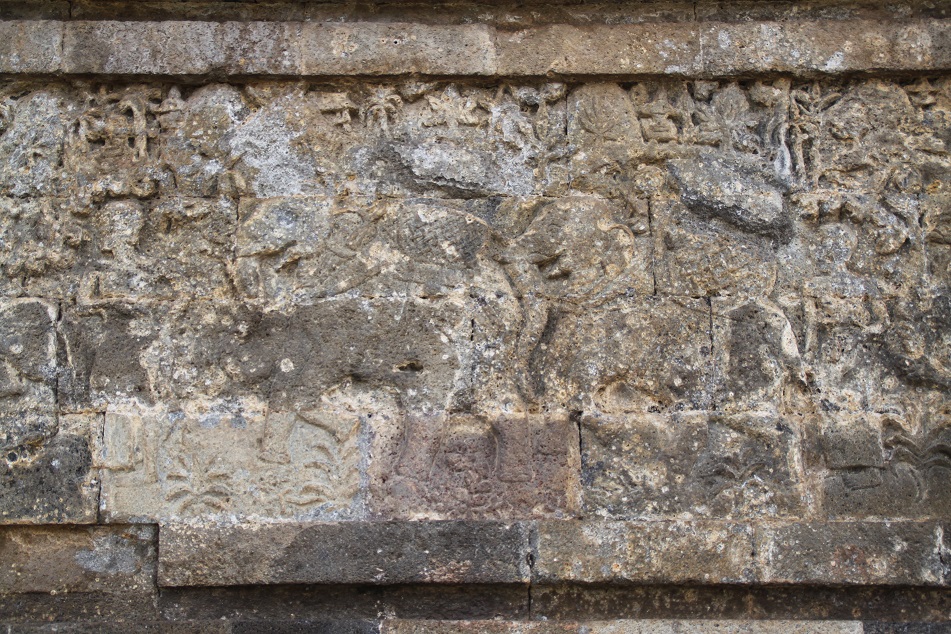
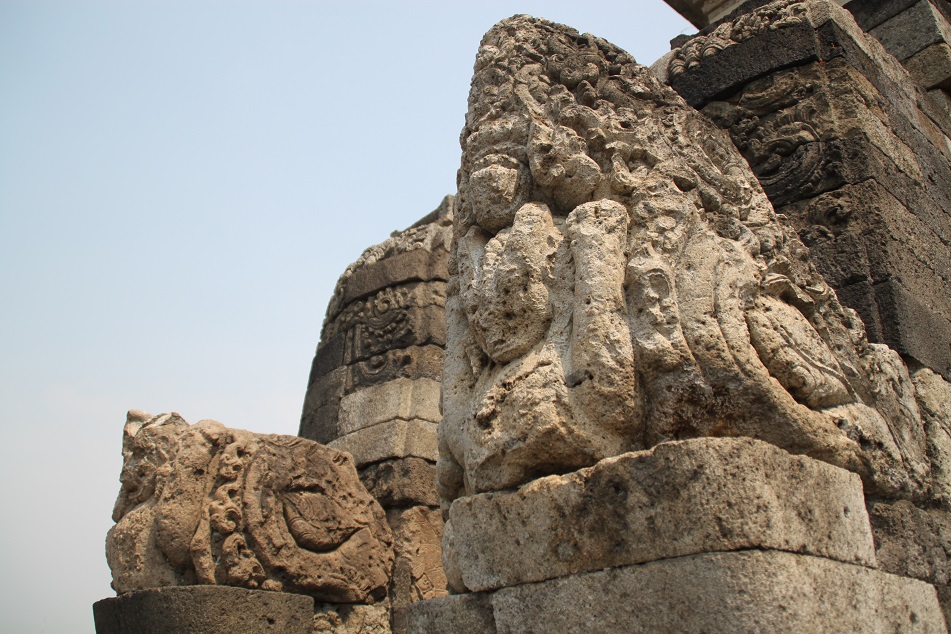

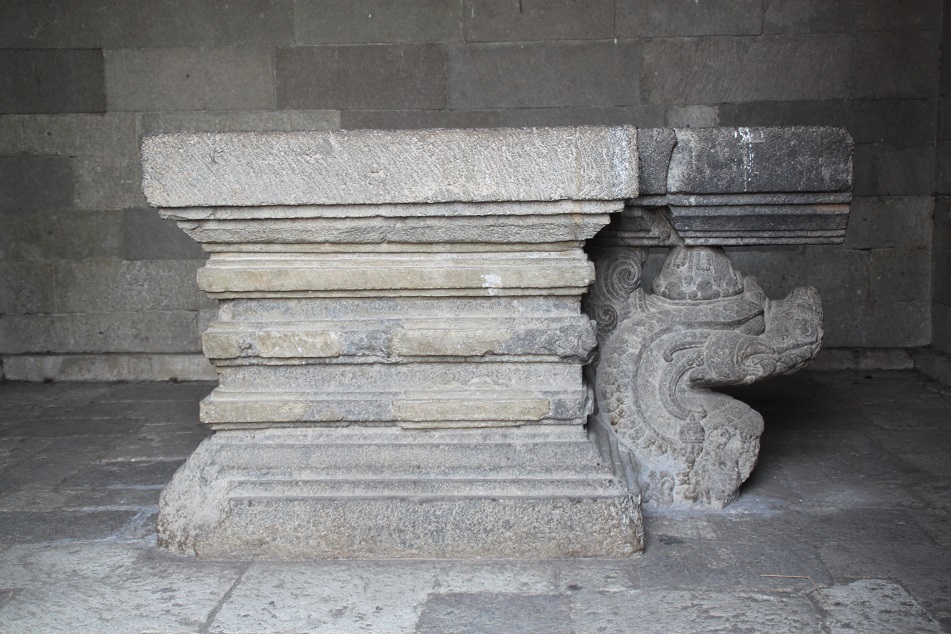
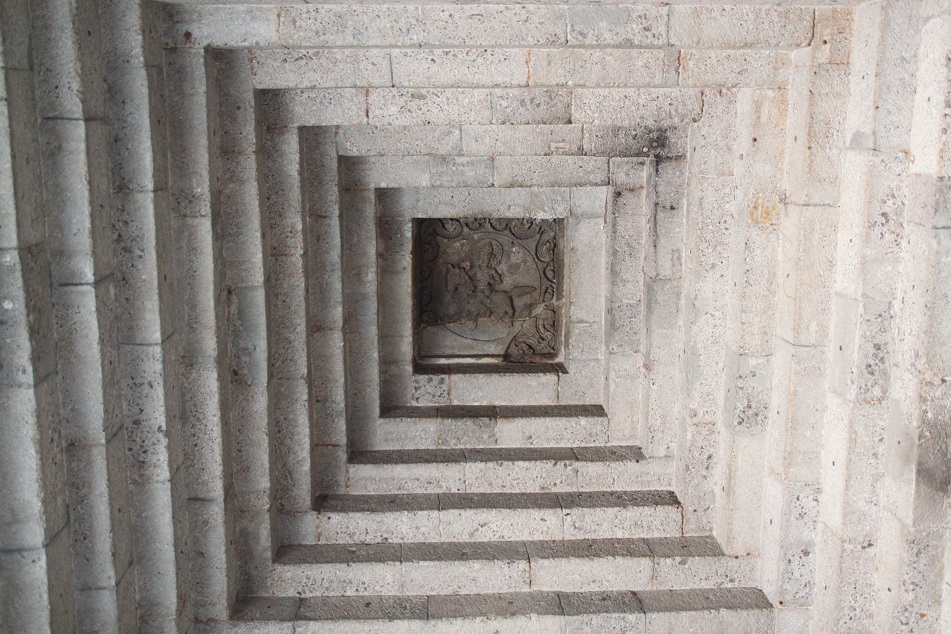
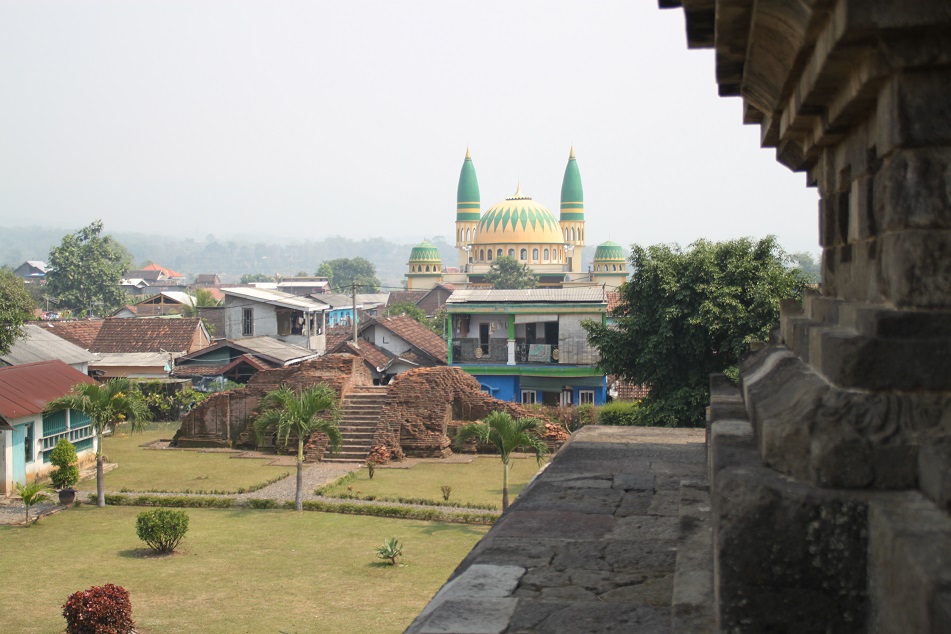
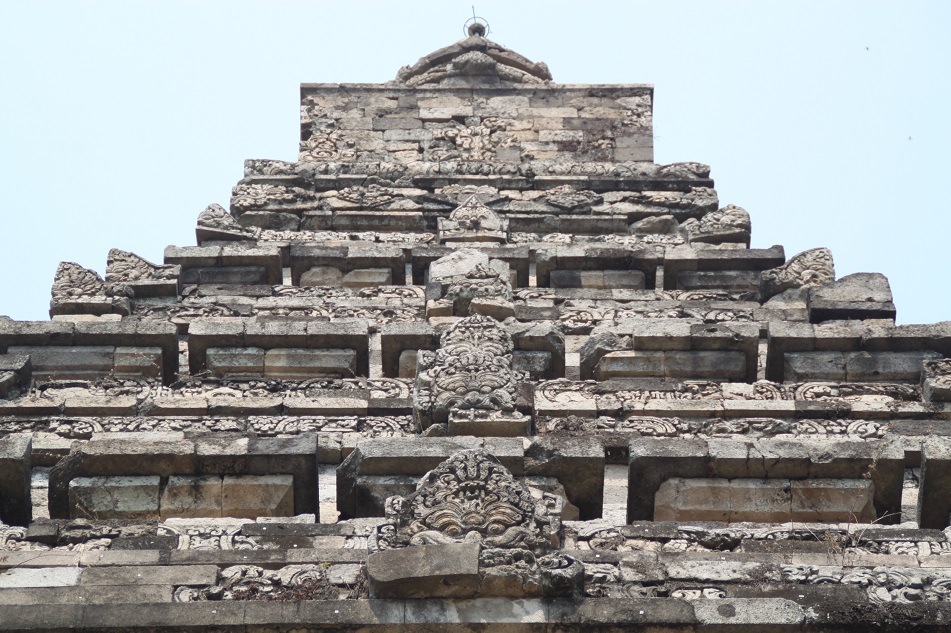


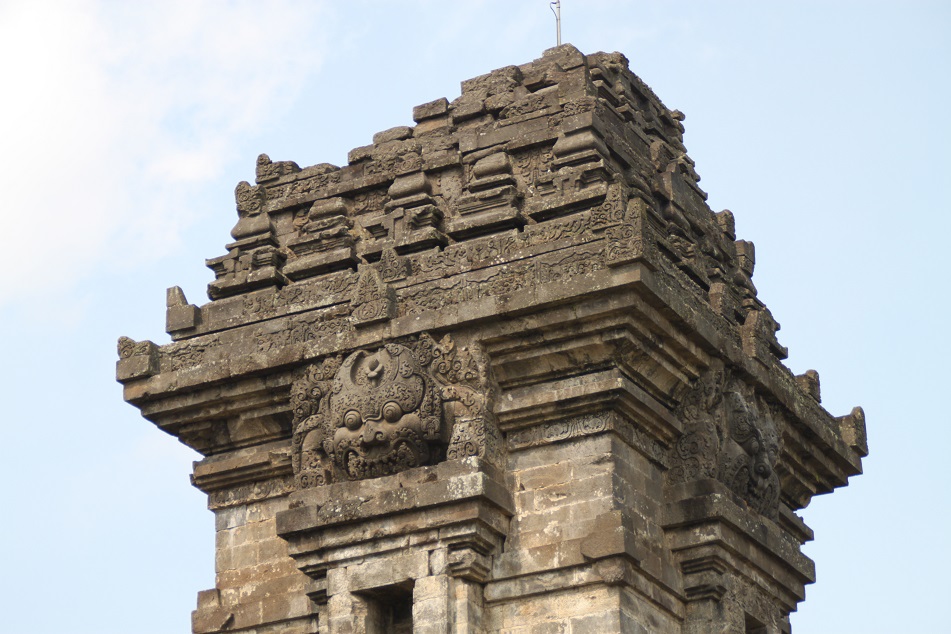

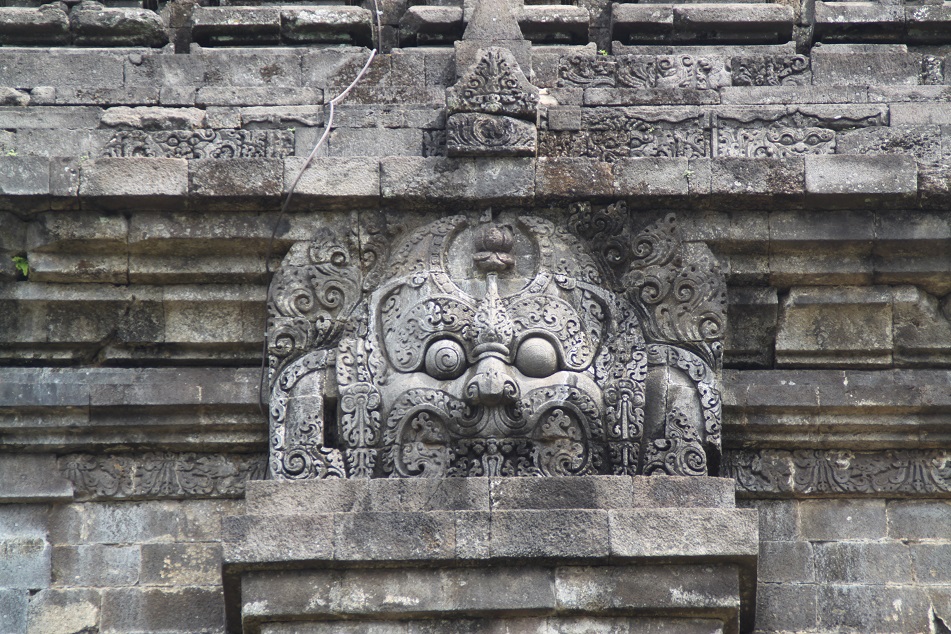
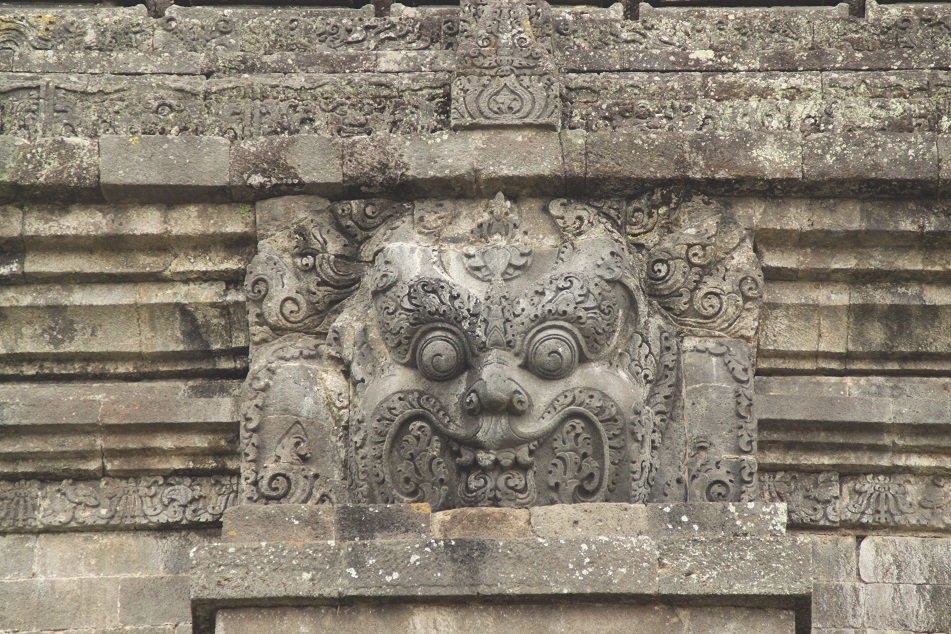
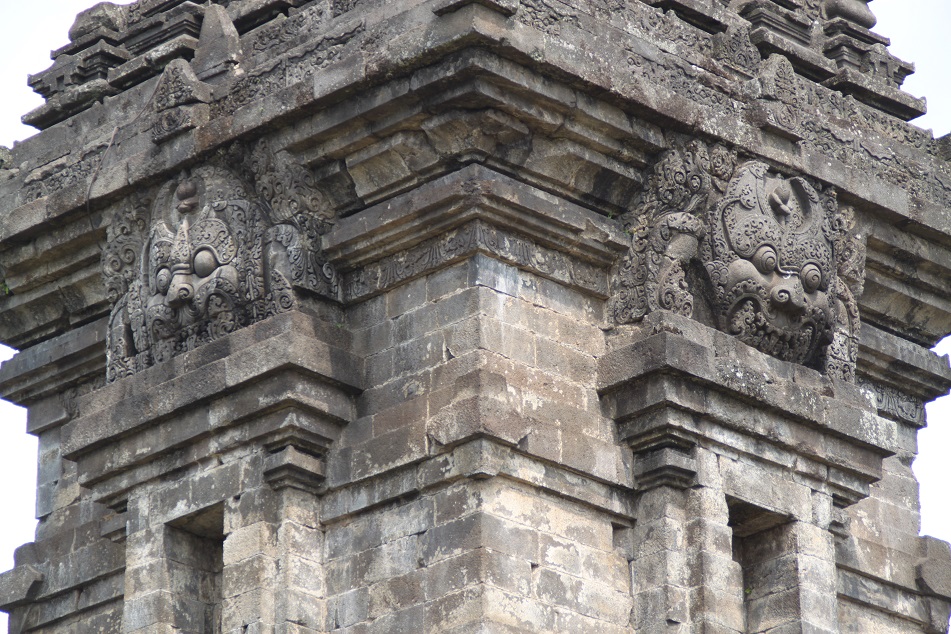

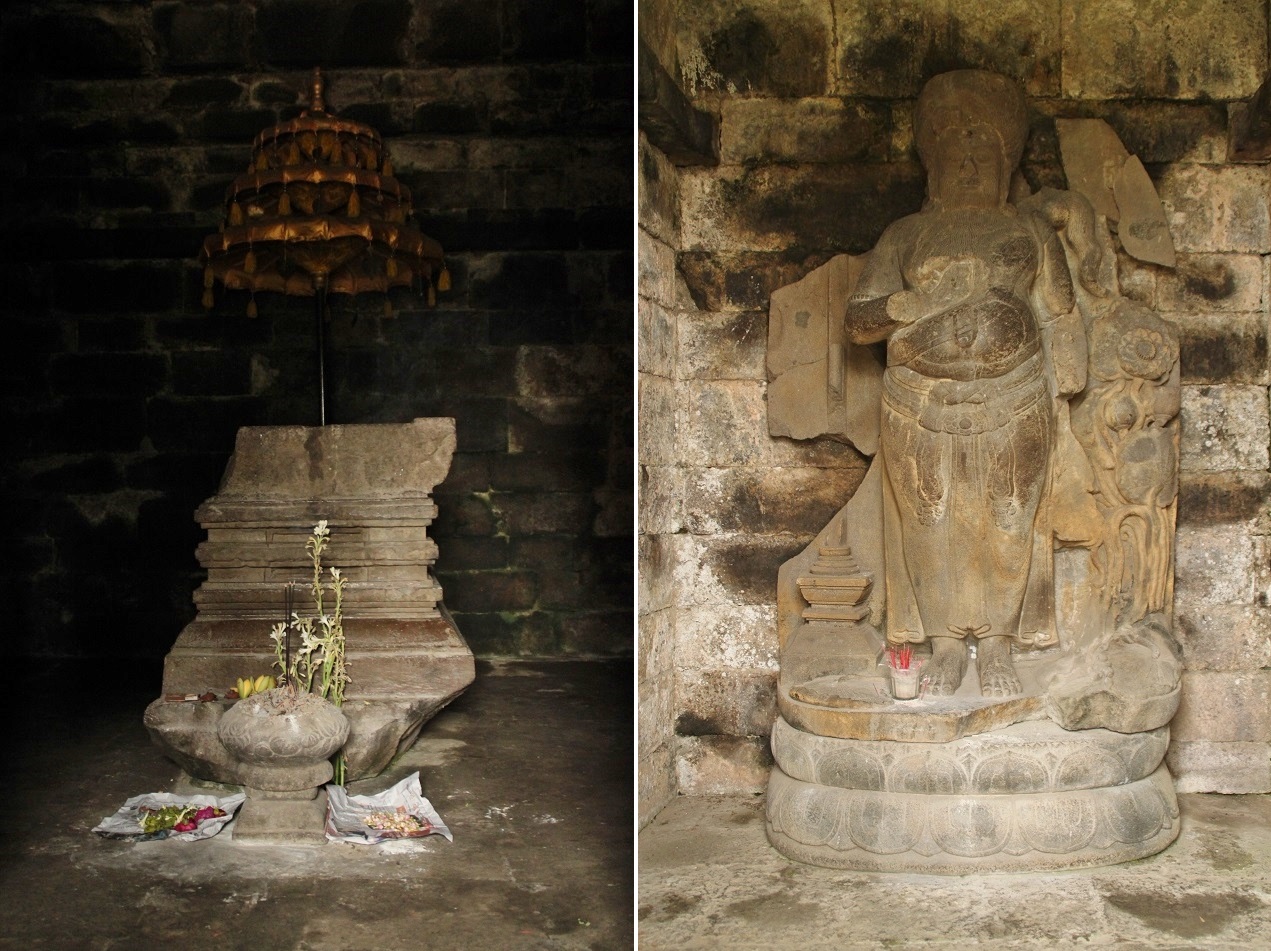

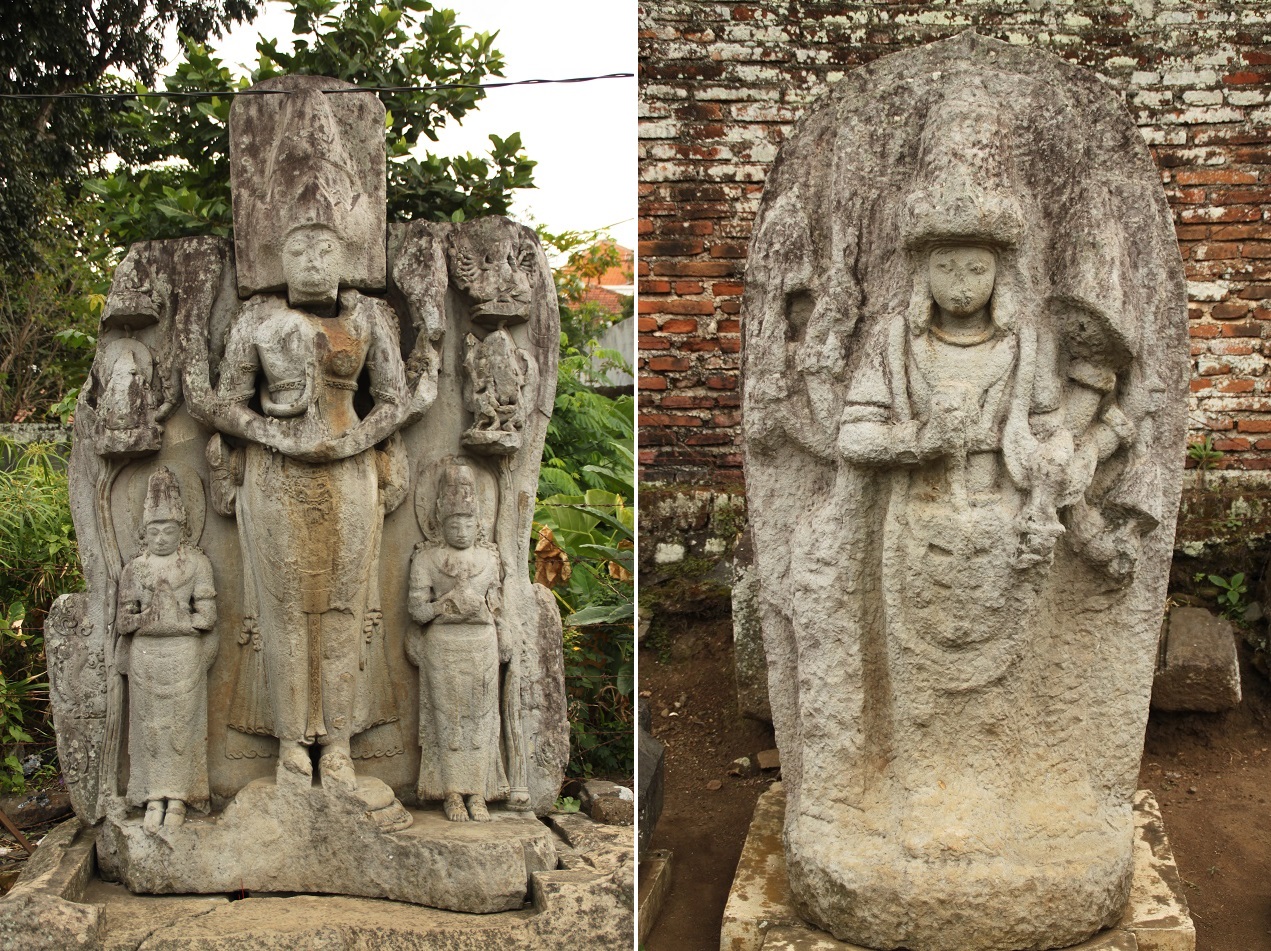


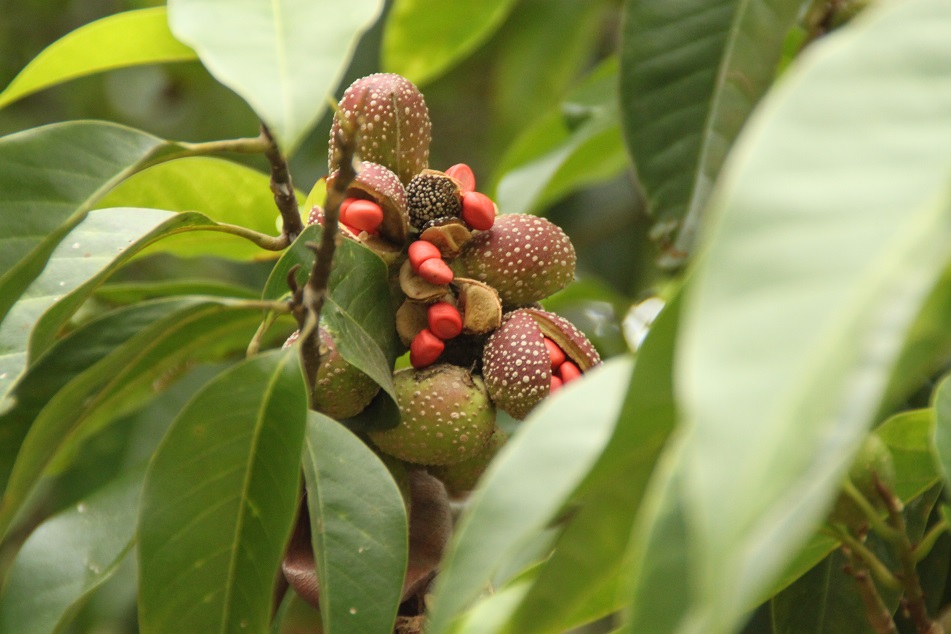



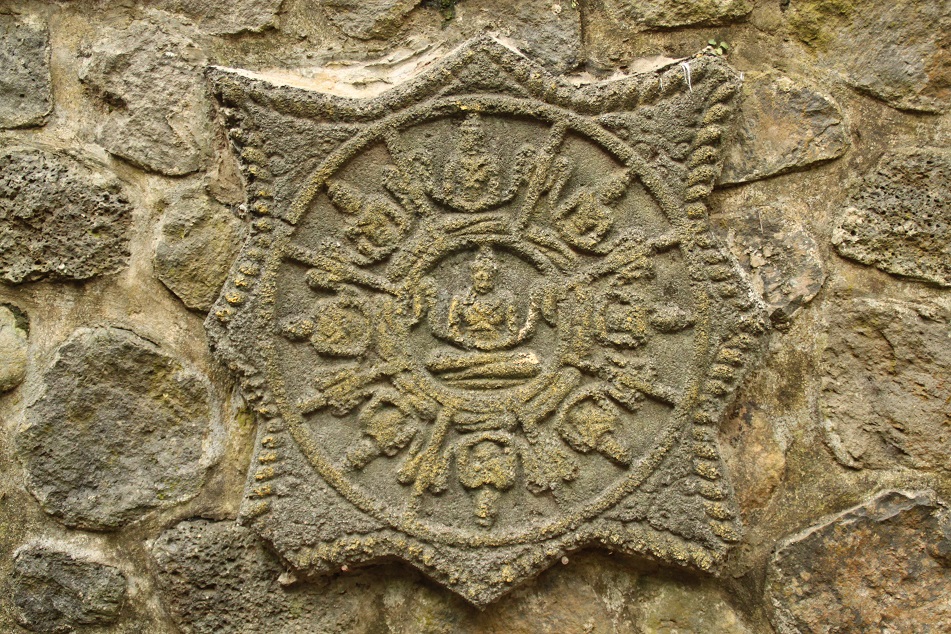
java have a lot temple with different History, it makes tourist want to know about that
LikeLike
Unfortunately even a lot of Indonesians are not aware of the history of Java and the numerous historical sites on the island.
LikeLiked by 1 person
Many many thanks go out for such an account by word and picture on the turbulent history of Java.
LikeLike
My pleasure, Peter! It’s always nice to know that people who live at the other side of the world are intrigued by the history of places across Indonesia — and so am I by those fascinating sites faraway from home. Glad you enjoyed this post!
LikeLiked by 1 person
I always love the story about Singhasari
LikeLiked by 2 people
Isn’t it very fascinating? Not the most peaceful chapter in the history of Indonesia, I know. But it shows how history keeps repeating itself, partly because many people just don’t care looking into the past and learning from the mistakes of those who lived long before us.
LikeLiked by 2 people
Your posts are a pleasant and surprising enlightenment, well researched and replete with apt, crystalline images.
LikeLike
Wow, I really appreciate your kind words, Umashankar! Thanks for reading.
LikeLiked by 1 person
Hi Bama, thanks for the history tour! Indonesian history doesn’t get taught at all here in Europe, so it’s good to learn something new.
LikeLike
Isn’t that the beauty of the blogging world? We share stories from our parts of the world with the people who live faraway from us, and learn their stories as well. Glad you enjoyed this post, Fabrizio!
LikeLiked by 1 person
you’re absolutely right, Bama!
LikeLike
Love your blog…for it just depicts awesome history of various places.
Amazing pictures. Getting to know of the places I’ve never been to makes me want to travel there!
LikeLike
Much appreciated, Isha! The world is one big amazing place, isn’t it? It’s filled with mankind’s greatest creations, although some do have a rather dark history. As we travel more we learn more and we appreciate more. Hope you’ll make it to Indonesia one day!
LikeLiked by 1 person
I always learn a great deal from you Bama. So much history and your gorgeous images like exclamation marks on the story. The fruit looks tempting by the way.
LikeLiked by 1 person
I hope you’re not too bored with all the information I seem to pack in each post I write — hence the photos to refresh people’s eyes after reading those words. I was really curious to touch the fruit, but it looked rather dangerous to me. 🙂 Thanks for reading, Sue!
LikeLiked by 1 person
Wonderfully done. I will be looking at this again. Thank you.
LikeLike
Thank you for your kind words!
LikeLike
What an impressive temple and history! You have so many fascinating things over in Asia! I need to get over someday and explore! 🙂
LikeLike
And what’s more interesting is the fact that there are still so many ancient temples buried in thick layers of soil and volcanic ash, waiting to be rediscovered. Right now I’m really intrigued by this site in East Java, only excavated a few months ago: https://www.google.co.id/search?q=situs+adan+adan&rlz=1C1ASUT_idID566ID566&source=lnms&tbm=isch&sa=X&ved=0ahUKEwiqg6uq8dnYAhUDE5QKHVmZBFUQ_AUICigB&biw=1536&bih=760
Hope you’ll get the chance to return to Asia sooner than later, Nicole!
LikeLiked by 1 person
Wow, sounds fascinating! I will get there some day Bama! Probably when the kids are in college! 🙂 I will have your blog ready as my resource when I go!
LikeLike
Whenever you’re planning a trip to Indonesia, please drop me an email! 🙂
LikeLiked by 1 person
Fascinating history. One can only imagine how hard life was for them.
LikeLike
Every time I go to an ancient ruin, I can’t help imagining how life was like for the people who built the structure. This afternoon I was actually having a conversation with one of my coworkers about this. Thanks for reading, John & Susan!
LikeLike
I love the juxtaposition of the history for context with your gorgeous images. Fascinating post! Well done, Bama.
LikeLike
Thank you, Heide! I try to make history a little bit more appealing by adding photos of the places I write about to give a better perspective (and hopefully to make more sense) of the world. Glad you enjoyed this post!
LikeLiked by 1 person
Sadly, I was only able to visit (beautiful and amazing) central java while sailing through Indonesia. But is is wonderful to see Singhasari in East Java through your lens and words. Magnificent.
LikeLike
Well, Central Java surely is a fascinating place! I don’t think I will ever get tired of visiting the ancient ruins in the province — although maybe I’m a bit biased as I come from its capital. There are still so many temples I have yet to visit. But every now and then I try to venture into East Java as well, an equally interesting place to explore. Thanks for reading!
LikeLiked by 1 person
Thank you for the wonderful post!
The mystery fruit/seeds are the seeds of Cempaka, Michelia champaca, the highly fragrant sacred flower of the Hindu Buddhist realm.
LikeLike
Thank you so much for the info on cempaka! I love the smell of that flower, but I had no idea how the seeds looked like.
LikeLike
Wow that’s cool! I don’t really know anything about the art and architecture of Java, but you’ve inspired me to pursue learning something about it. The detail in the carvings is really fascinating. Thank you so much for posting this! Your photos are gorgeous.
LikeLike
Thanks Alexandra! If you want to know more about Java, I can recommend you Sir Thomas Stamford Raffles’ book, The History of Java. He was the governor general during the British short colonial rule of Java before the island was handed back to the Dutch. But in such a short stint, he became so fascinated by the ancient ruins scattered all across the island and was credited for rediscovering some long-lost temples.
LikeLiked by 1 person
I will absolutely check it out! Thanks so much!
LikeLike
My pleasure!
LikeLike
What a long history! Fascinating! Thank you.
LikeLike
And thanks for reading, Adelheid! With ancient ruins dating back to more than 1,000 years ago, Java surely is a fascinating place for those who love history.
LikeLike
Beautiful photos! I love reading about the history of interesting artifacts.
LikeLike
Thanks Julie! Sounds like Asia would suit you. 🙂
LikeLiked by 1 person
Interesting details and history. Well done, Bama!
LikeLike
Thank you, Indah! The temples around Malang are so impressive, yet often overlooked. You might want to consider a trip there when you “pulang kampung” one day! 🙂
LikeLike
These temples seem so remarkable and outstanding, Bama! Loved the pictures you provided! You really have an eye for detail. 😉
LikeLike
Thanks Agness! These ancient temples certainly deserve more exposure not only to foreigners, but also Indonesians. History really comes alive when you visit historical places yourself.
LikeLike
Hello Bama very interesting history about that side of the continent. I find the history about the Mongols very fascinating and interesting as my history classes in North America did not cover much about these nomadic tribes. I find your pictures of the Javanese temples here somewhat similar the level of intricate details and designs of those of the Chichén Itzá pyramids in Mexico.
LikeLike
Despite what they did to the cities they conquered, the story of how a nomadic tribe from the steppes of Central Asia rose to prominence and became the most dominant force across the continent and all the way to Europe truly is remarkable. I would love to go to Mongolia one day to see the place where it all started. As for the intricate details of those Javanese temples, now you know why the Mayan ruins in Mexico and Central America are among the places I wish to see in my life. There’s something about remnants from ancient civilizations that is so enthralling. Thanks for reading, Liz!
LikeLiked by 1 person
I knew the Mongols ranged far and wide, but somehow I never thought of them traveling as far as Java. We think we are so globally interconnected nowadays, but people were traveling and interacting culturally centuries before!
LikeLiked by 1 person
The world has been interconnected globally for a long time even before the term globalization was coined. Traveling around the globe is essentially retracing those long-lost connections our ancestors had made and reconnecting ourselves with the people we thought were different from us. I hope Ecuador has been treating you well!
LikeLike
Interesting ! Thank’s
LikeLike
Merci Richard!
LikeLiked by 1 person
Pingback: Blitar under the Radar | What an Amazing World!
Pingback: Surabaya: Brash and Brave | What an Amazing World!
Pingback: Trowulan: An Ancient Javanese City | What an Amazing World!
Pingback: Ngawen & Losari: Temples on the Outskirts of Jogja | What an Amazing World!